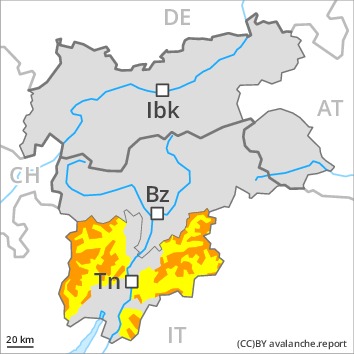
Danger level
 | treeline |
|  |
|  | ||||
|  |
|  |

Fresh wind slabs are to be evaluated with care and prudence. On steep grassy slopes natural avalanches must be expected in isolated cases.
The new snow and wind slabs of the last few days can be released, especially by large additional loads, in all aspects above the tree line. On steep grassy slopes individual gliding avalanches are possible in the afternoon, but they will be mostly small. This applies in particular on steep sunny slopes below approximately 2500 m.
Ski touring calls for experience in the assessment of avalanche danger and careful route selection.
Snowpack
dp.2: gliding snow
dp.6: cold, loose snow and wind
As a consequence of the moderate to strong wind, snow drift accumulations formed during the last few days, in particular adjacent to ridgelines and in gullies and bowls. Faceted weak layers exist deep in the old snowpack in particular at high altitudes and in high Alpine regions. The covering of new snow is fairly homogeneous and has a loosely bonded surface. At low and intermediate altitudes, for the time of year, a lot of snow is lying. Towards its base, the snowpack is moist. Naturally triggered avalanches and snow profiles have confirmed this situation. As a consequence of mild temperatures and solar radiation the snowpack will consolidate during the next few days.
Tendency
The avalanche danger will decrease gradually.





